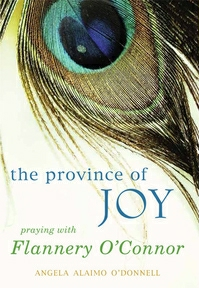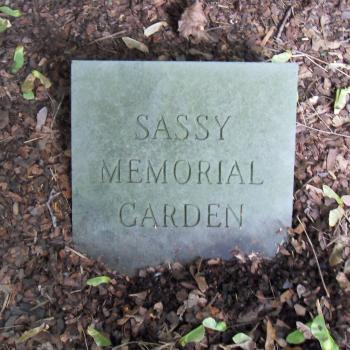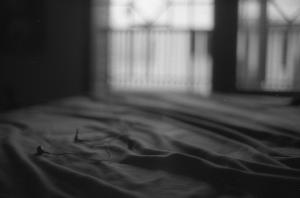 For over twenty-five years, my husband and I have prayed morning and evening prayer together. They are the hinges of our day, a metaphor I borrow from the introduction to the prayer book we use: The Liturgy of the Hours, also known in Catholic worship as the Divine Office.
For over twenty-five years, my husband and I have prayed morning and evening prayer together. They are the hinges of our day, a metaphor I borrow from the introduction to the prayer book we use: The Liturgy of the Hours, also known in Catholic worship as the Divine Office.
Our pattern is to pray morning prayer right after breakfast (I don’t pray well on an empty stomach), then evening prayer right after dinner. Of course we sometimes have to break the pattern and skip the prayers: if one of us is traveling, or if we have to rush out to a doctor’s appointment after breakfast or an evening event after dinner. But the pattern is followed as much as practicable, and I can’t imagine our lives without it.
Starting and ending the day with praise of God helps put into perspective our current fussing. And there’s nothing so good for a marriage as saying the Lord’s Prayer together twice a day, with its focus on forgiveness.
The Divine Office is an ancient tradition in the Catholic church. I like following a time-honored pattern, and one that is also being followed by people around the world each day. Praying the liturgy of the hours makes me feel part of the body of Christ in a real way.
So I was delighted to discover a new book that connects me through the divine office not only with unnamed believers through time and space but also with a writer whose work I’ve long treasured: Flannery O’Connor.
Paraclete Press has just published The Province of Joy: Praying with Flannery O’Connor, by poet and professor Angela Alaimo O’Donnell. What O’Donnell has done in this book is marvelously creative: she has put together a version of morning and evening prayer that draws specifically on prayers that Flannery prayed, as well as comments about prayer in her letters and passages from her fiction that bear on the prayers of the day. (I’m calling her Flannery in this post to avoid the awkwardness of O’Connor and O’Donnell. And I do feel a first-name intimacy with her.)
Adapting the divine office like this is perfectly acceptable. I’ve adapted it myself over the years, sometimes substituting psalm translations I prefer or scripture readings that are more meaningful to me. O’Donnell has added to each day’s morning prayer a prayer that was Flannery’s favorite, one new to me. It’s the Prayer to St. Raphael.
I find this prayer astoundingly moving, with its opening lines expressing a longing I didn’t know I had, yet certainly do:
O Raphael, lead us toward those we are waiting for,
those who are waiting for us:
Raphael, Angel of happy meeting,
lead us by the hand toward those we are looking for.
May all our movements be guided by your Light
and transfigured with your joy.
I’d never thought that each day we are waiting for the right encounters, for those happy meetings that will somehow bring us closer to God and to one another (whoever that other might turn out to be). Yet surely we are.
When Flannery copied out this prayer for a friend, she added a paraphrase from which O’Donnell takes her book’s title: “The prayer asks St. Raphael to guide us to the province of joy so that we may not be ignorant of the concerns of our true country.”
O’Donnell then reminds us that Flannery wrote this as she neared her death from the debilitating chronic illness of lupus she lived with for many years, writing that:
[She] knew that the ‘true country,’ the proper destination, orientation, and disposition of a believing Christian, is joy.… Prayer, for O’Connor, was a means of moving from the limited place in which she found herself toward the limitless space of joy, a location that can be occupied in the here and now, as well as looked forward to in eternity.
Succumbing too easily to discouragement, as I do, I’m grateful for this reminder that joy is our true home.
And grateful, too, that O’Donnell presents Flannery to us in terms that are especially resonant for the Image community. Flannery O’Connor, she says, “is of particular interest to a growing number of readers who are interested in writers who consciously explore the intersection between art and faith.” This is precisely the intersection where we in the Image community reside.
Then O’Donnell elaborates:
I see in O’Connor an example of a person who has integrated her faith and her art so thoroughly that they have become one practice. In an era wherein such integration is not only rare but is considered by many people in both the secular and sacred realms to be anathema, O’Connor demonstrates that this can be done and done beautifully.
O’Donnell’s book does this beautifully as well. The divine office is already art: it draws on the poetic art of the psalms, and its very structure is an art form that moves us more deeply into the life of Christian faith. Enhancing this structure by incorporating Flannery’s own art, O’Donnell creates a work of art that is a practice of faith.
Peggy Rosenthal is director of Poetry Retreats and writes widely on poetry as a spiritual resource. Her books include Praying through Poetry: Hope for Violent Times (Franciscan Media), and The Poets’ Jesus (Oxford). See Amazon for full list. She also teaches an online course, “Poetry as a Spiritual Practice,” through Image’s Glen Online program.











